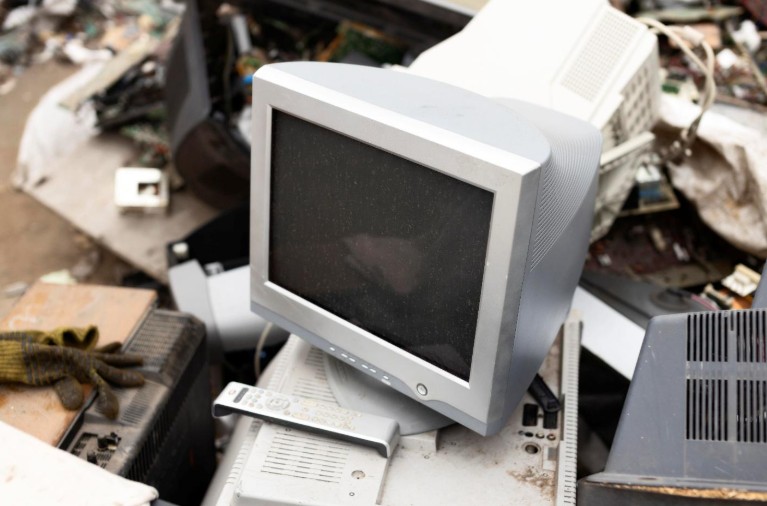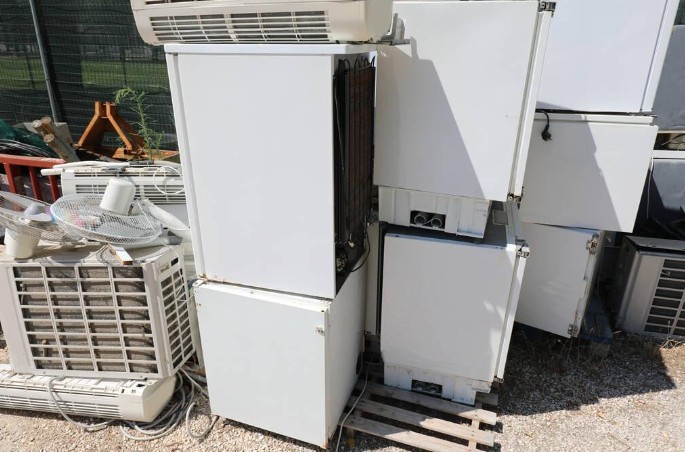
How to Safely Remove Old Appliances from Your Home
Getting rid of an appliance like a big fridge, washer, or stove can create the unencumbered space—and mind—that you’re hoping for. But doing so incorrectly can result in injury, leaks, or costly repairs. With a safety mindset, proper equipment, and a clear plan of attack, you’ll be able to move heavy appliances without hurting yourself or your home. If you get three quarters of the way through your move and realize you would rather not risk it, you are entirely prudent to call for licensed haulers or a local junk hauler to finalize the job.
For more information, follow this page https://www.epa.gov/large-scale-residential-demolition/household-appliances-and-demolition.
Are Old Appliances Dangerous?
Old appliances have “problems” hiding in plain sight. Frayed cords can give you a shock. A fridge may have refrigerants, which must be handled by certified recyclers. Washers and dishwashers can contain stagnant water and mold, and old ranges have brittle connectors for gas. Even a loose door is enough to make from a heavy box to a toppling risk.
Before you do anything, inspect the unit and the area around it. Look for corrosion and leaks, and outlets that show signs of scorching. Make sure you have a clear path to your exit and a plan for where the appliance goes once it’s outside. If you’re assisting a neighbor with a clean out of an estate, don’t leave anything to chance; do not trust that things are where they should be or in the condition they should be.
- Electrical hazards: cracked plugs, missing ground prongs, and/or DIY splices. Check here for more information.
- Chemical hazards: leaks from the refrigerant, moldy standing water, and/or detergent residue.
- Tipping/weight hazards: doors that are loose, top-heavy designs, and/or uneven casters.
- Sharp edges and pinch points around the panels, hinges, and handles.
Lifting and Moving Safely
Moving a 200-300 lb. machine is all about leverage, not strength or tool. First, measure your doorway, hallway turns, stair angles, etc. Strip off any shelves, racks, or drawers to minimize weight and eliminate noise. Tape doors shut and wrap the unit in moving blankets for grip and protection.
Use a quality appliance dolly with a ratchet strap and, when it is possible, a second set of hands. Keep the load close to your body, push rather than pull on flat surfaces, and take short, deliberate steps. Wear a glove with grip, slip-resistant shoes, and avoid loose clothing that can snag. If stairs are a factor, communicate each step during the move verbally and step down one step at a time with the heavier end down.
Disconnecting Water and Power
Before disconnecting anything, find the shutoffs and know where your electrical panel is located. Unplug the electrical units, then kill the breaker. If in doubt about what to do for gas, stop and call a professional, as gas work is not the gray area of DIY work! For water lines, you will want towels, a bucket, and caps or plugs for the hoses. Taking a couple of extra minutes to do this will prevent leaks, shocks, and messes.
- Shut off the water supply at the closest valve, then run a short cycle (or use the drain function) to purge any remaining water.
- Disconnect the inlet hoses on washers/dishwashers; drain into a bucket afterward and cap the ends.
- For ice makers, close the saddle valve, loosen the compression fitting, and cap the line.
- Unplug the appliance; then turn the correct breaker to OFF. When removing a cover to access live terminals, check with a non-contact voltage tester first.
- For gas ranges/dryers: close the shutoff valve (handle will be perpendicular to the pipe), remove the flexible connector, and immediately install a listed cap on the outlet. If at any time you smell gas, evacuate and contact your utility or a licensed technician.
- Coil cords/hoses and strap to cabinet so they won’t snag while in motion.
Once you are done, label any capped lines and keep the workspace dry—water and electricity are never a good combination. If applicable, it is also a good time to arrange for eco-friendly disposal to ensure the appliance doesn’t end up in a landfill.
Recycling Refrigerators and Stoves

Most refrigerators, freezers, and AC units have refrigerants and oils that require certified recovery. Many municipalities will pick up appliances during bulk trash, but refrigerators typically require the doors to be removed and tagged with a specific sticker. Sometimes rebates from retailers and utilities include haul-away with the purchase of an Energy Star replacement. If you’re replacing multiple items, some services offer pricing by volume that could be less expensive than piece-meal.
If you’re local and want to use professionals, check out appliance removal King of Prussia offerings for curb side or full-service pick-up. A reputable company will evacuate refrigerant, do the heavy lifting, and make sure that the unit is recycled.
If pick-up schedule is tight, find out if they have same day availability or after-hours intervals. Make sure to clarify what’s included (door removal, stair fees, disposal certificates) and keep your receipt for your records.
Avoiding Damage to Floors
Floors can be more fragile than they look. Appliance feet can dent hardwood floors, tile can crack, and vinyl can tear if you drag instead of roll. Before moving the appliance, make sure to clean the pathway, because grit will sand like sandpaper, and protect the thresholds that could catch casters or edges.
- Lay a continuous runway of plywood or hardboard from the appliance to the exit—no gaps.
- Use furniture sliders or lay a sheet of cardboard under all four feet before tilting the appliance onto the dolly.
- Use a small ramp or stacked mats to bridge door saddles so they don’t chip.
- Keep the appliance wrapped in moving blankets to protect walls and trims from scuffs.
- If you’re moving on stairs, use a runner and control the descent with the dolly’s strap—easy does it.
Once the unit is out, do a final sweep for drips and hardware, then remove the protective runway. Following these steps to protect your back and home will mean you’re ready and without surprise repairs when the replacement is delivered. If anything feels beyond your comfort level, hiring licensed haulers, or a local junk hauling team for the final leg is money well spent—and often cheaper than fixing a gouged floor.
